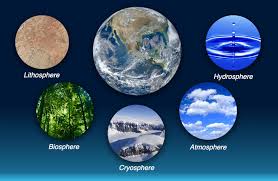What Five Essential Elements Must Be Present to Provide a Proper Habitat for Wildlife?
Creating a proper habitat for wildlife is crucial for the survival and well-being of various species. Whether you’re a wildlife enthusiast, a student, or someone interested in conservation, understanding the essential elements of a habitat can help you appreciate the intricate balance of nature. In this article, we’ll explore the five key components that make a habitat suitable for wildlife: food, water, shelter, space, and proper climate.
1. Food: The Foundation of Survival
The first and most critical element of any wildlife habitat is food. Each species has unique nutritional needs for survival and reproduction. Food provides the energy and nutrients needed for growth, development, and overall health. Here, we take a closer look at the different nutritional needs of animals and how they can be met in their habitats.

Types of Food Sources
- Plants and Vegetables: Many animals rely on plants, fruits, seeds, and leaves as their primary source of food. Herbivores, such as deer, rabbits, and some birds, depend on many plants for their survival. For example, deer feed on leaves, twigs, and fruits, while rabbits consume grasses and vegetables. Birds eat seeds, nectar or fruit, depending on species. Plants benefit by increasing the number of plants that support a variety of herbivores and pollinators, such as bees and butterflies.
- Prey and Insects: Carnivorous animals, such as foxes, hawks, and snakes, need a steady supply of prey. This includes small mammals, birds, and insects. Foxes may hunt rodents and small birds, while hawks prey on small mammals and other birds. Snakes might consume rodents, birds, or even insects. The existence of livestock in the region supports the continuation of livestock farming and maintains the ecological balance.
- Water Source: Fishing water and birds require a water body with fish and other marine water. For example, herons and kingfishers require water and lakes rich in fish, while otters require water bodies rich in fish and aquatic invertebrates. Ensuring healthy aquatic ecosystems with diverse fish populations is vital for the survival of these species.
Ensuring Adequate Food Supply
To provide a proper habitat, it’s essential to ensure that food sources are abundant and diverse. This can be achieved through several measures:
Planting Native Vegetation: Native plants are well-adapted to the local environment and provide the best food sources for native wildlife. Planting a variety of native species can ensure that food is available throughout the year.
Creating Food Plots: In larger conservation areas, food plots can be established to provide additional food sources. These plots can be planted with crops like clover, corn, or sunflowers to attract herbivores and their predators.
Maintaining Healthy Ecosystems: Protecting and restoring natural ecosystems, such as forests, wetlands, and grasslands, helps maintain the food web and supports diverse wildlife populations.
2. Water: The Lifeline of Wildlife
Water is essential for all living beings, and wildlife is no exception. Animals need water for drinking, bathing, and, in some cases, as a habitat for their food sources. Access to clean, adequate water is critical to wildlife’s health.

Types of Water Sources
Fresh water: Lakes, rivers, streams, and lakes provide drinking water for many animals. Deer, elk, and many species of birds depend on these streams for water.Freshwater sources also support fish, amphibians, and invertebrates, which are crucial for many food webs.
Wetlands: These areas are critical for many species of birds, amphibians, and insects. Wetlands also act as breeding grounds and provide abundant food. Birds such as ducks, geese, and wading birds depend on wetlands for nesting and feeding. Amphibians like frogs and salamanders require wetlands for breeding and larval development.
Intermittent rivers: Even temporary rivers and seasonal streams can support wildlife by providing water and habitat for insects and amphibians. These temporary sources are especially important during the dry season or in arid regions.
Ensuring Water Availability
Providing adequate water sources can involve several strategies:
Creating Ponds and Waterholes: In areas where natural water sources are scarce, creating artificial ponds and waterholes can provide essential water for wildlife. These water sources should be designed to mimic natural conditions and support a variety of species.
Protecting Watersheds: Ensuring that watersheds remain healthy and free from pollution is vital for maintaining clean water sources. This involves protecting forests, wetlands, and riparian areas that filter and regulate water flow.
Installing Bird Baths and Water Features: In urban and suburban areas, bird baths and small water features can provide critical hydration for birds and small mammals. These should be kept clean and filled with fresh water to prevent disease.
3. Shelter: A Safe Haven
Shelter provides protection from predators, harsh weather, and a place to raise offspring. Different species have varied shelter needs, which can include natural features and man-made structures. Providing adequate shelter helps ensure the safety and reproductive success of wildlife.

Types of Shelters
Trees and Bushes: Birds and small mammals often use trees and dense bushes for nesting and protection. Birds build nests in tree branches, while squirrels and other small mammals use tree cavities for shelter. Dense trees provide protection from animals and severe weather conditions.
Underground Burrows: Animals such as rabbits, wolves, and many rodents dig burrows to protect themselves from predators and extreme weather conditions. These burrows provide a secure environment for raising young and avoiding danger.
Caves and rock crevices: Large animals such as bears and lions use caves or rock crevices. This natural structure provides protection from objects and animals.
Man-made Structures: In urban environments, wildlife may use buildings, bridges, and other man-made structures as shelter. Birds might nest on building ledges, and bats often roost in attics or under bridges.
Providing Adequate Shelter
Creating and maintaining suitable shelters involves several practices:
Preserving Natural Habitats: Protecting forests, grasslands, and wetlands ensures that natural shelters remain available. This includes preserving old trees with cavities and maintaining dense vegetation.
Installing Nest Boxes and Bat Houses: In areas lacking natural shelters, installing nest boxes for birds and bat houses can provide critical nesting sites. These structures should be placed in safe locations and monitored for use.
Creating Brush Piles and Rock Piles: In backyards and conservation areas, creating brush piles and rock piles can offer shelter for small mammals, reptiles, and amphibians. These piles provide cover from predators and harsh weather.
4. Space: Room to Roam
Space is a critical component that influences an animal’s ability to find food, water, and shelter. Adequate space is necessary to avoid overpopulation, which can lead to resource depletion and increased conflict among species. Ensuring sufficient space supports healthy populations and allows for natural behaviors.

Importance of Space
Territorial Range: Many animals, especially predators, require large territories to hunt and find mates. For example, wolves and large cats have extensive ranges that can cover several square miles. Adequate space allows these animals to establish territories and reduce conflicts.
Breeding Areas: Species need specific spaces for mating and rearing their young. For instance, turtles need beaches for laying eggs, and birds require secluded areas for nesting. Providing these breeding areas is essential for reproductive success.
Migration Routes: Some animals, like migratory birds and certain mammals, need vast areas to move between seasonal habitats. Ensuring that migration routes remain unobstructed supports the survival of these species.
Ensuring Adequate Space
Providing sufficient space for wildlife involves several strategies:
Establishing Wildlife Corridors: Creating and maintaining wildlife corridors allows animals to move freely between habitats. These corridors connect fragmented habitats and support migration, foraging, and breeding.
Managing Population Density: In some cases, it may be necessary to manage population density through practices like habitat restoration or controlled relocation. This helps prevent overpopulation and resource depletion.
Protecting Large Natural Areas: Preserving large tracts of natural habitats ensures that wildlife has the space needed for natural behaviors. This includes establishing protected areas and conservation easements.
5. Proper Climate: The Right Conditions
The climate of a habitat affects the availability of food, water, and shelter, and influences the survival of species. Different species are adapted to specific climate conditions, and changes in climate can have significant impacts on wildlife populations.

Climate Factors
Temperature: Different species thrive in different temperature ranges. Polar bears need cold climates, while tropical birds require warm environments. Temperature influences metabolic rates, breeding cycles, and behavior.
Rainfall: Adequate rainfall supports plant growth, which in turn supports herbivores and the carnivores that prey on them. Rainfall patterns also influence the availability of water sources and the health of ecosystems.
Seasonal Changes: Many species are adapted to specific seasonal cycles for breeding, hibernation, and migration. For example, bears hibernate during winter, while migratory birds travel to warmer regions.
Mitigating Climate Impacts
To support wildlife in the face of climate change, several measures can be taken:
Restoring and Protecting Habitats: Restoring degraded habitats and protecting existing ones helps buffer the impacts of climate change. Healthy ecosystems are more resilient to changes in climate conditions.
Providing Artificial Microclimates: In some cases, artificial structures can create microclimates that support wildlife. For example, shade structures can provide cooler areas for animals during hot weather.
Supporting Climate Adaptation: Encouraging the natural adaptation of species to changing climate conditions can involve protecting genetic diversity and facilitating migration to suitable habitats.
Conclusion
Understanding the five essential elements of a wildlife habitat—food, water, shelter, space, and proper climate—can help in conservation efforts and creating environments where wildlife can flourish. Whether you’re managing a backyard garden, a local park, or a larger conservation area, ensuring these components are present is key to supporting healthy wildlife populations.
For more detailed information on creating and maintaining wildlife habitats, check out resources from reputable organizations like the National Wildlife Federation and World Wildlife Fund.
Creating a habitat that meets these essential needs is a step towards ensuring that our wildlife can thrive and continue to be a vital part of our ecosystems. Let’s take action and contribute to the conservation of our natural world!
Additional Resources
To delve deeper into the topic of wildlife habitats, consider exploring these resources:
- National Geographic: Habitats – An in-depth look at various habitats around the world and the wildlife they support.
- U.S. Fish and Wildlife Service – Information on habitat conservation programs and initiatives in the United States.
- The Nature Conservancy – Insights into why saving wildlife habitats is crucial for biodiversity and human well-being.
Practical Steps for Homeowners
If you’re interested in supporting wildlife in your own backyard, here are some practical steps you can take:
Create a Wildlife-Friendly Garden: Plant native species, install bird feeders and baths, and provide natural shelters like brush piles.
Reduce Chemical Use: Avoid using pesticides and herbicides that can harm wildlife. Opt for natural pest control methods.
Conserve Water: Use water-saving techniques like rain barrels and drip irrigation to maintain water sources for wildlife.
Participate in Citizen Science: Join programs that monitor local wildlife populations and contribute to conservation efforts.
By understanding and supporting the essential elements of wildlife habitats, we can all play a part in preserving the natural world for future generations.





